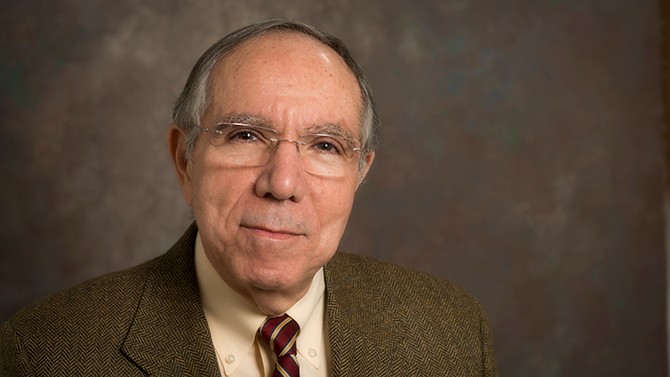Seminal paper on sediment-water interaction wins national award
In 2010, the U.S. Environmental Protection Agency established the Chesapeake Bay Total Maximum Daily Load (TMDL), in effect putting the huge body of water — along with the region’s streams, creeks and rivers — on a “pollution diet.”
Like a food diet that specifies reductions in fat, protein, and carbohydrate intake to promote weight loss, a TMDL details the reductions in such pollution sources as nitrogen, phosphorus and sediment needed to meet water quality standards.
Effective development and implementation of the Chesapeake Bay TMDL would not have been possible a generation ago — in the days when water quality modelers considered bodies of water and the sediment that lies at the bottom of them as separate entities.
But a paper published in 1990 by Dominic Di Toro, Edward C. Davis Professor of Civil and Environmental Engineering at the University of Delaware, brought about a major change in the field of modeling sediment-water interactions.
The paper, “Sediment Oxygen Demand Model: Methane and Ammonia Oxidation,” was recently selected to win the 2016 Outstanding Publication Award from the Association of Environmental Engineering and Science Professors (AEESP).
“It’s the step-by-step development of the integrated model from previously published but separate models that is so innovative and unique about this paper,” says Jim Fitzpatrick, project principal engineer at HDR.
The role of sediment in pollution
Sediments accumulate beneath bays, rivers, lakes and other bodies of water from rock breaking down over time as well as from soil running off nearby fields.
It has long been recognized that sediments can consume oxygen, leading to depleted dissolved oxygen levels in the water column and poor water quality. But no one knew how to quantitatively relate the rate of sediment oxygen consumption to the quantity of organic matter settling to the sediment — no one, that is, until Di Toro created a model that treated sediment as an integral part of the aquatic environment.
Mathematical models are critical because, as Di Toro says, “It is not clear just what the resulting dissolved oxygen concentration would be after the waste treatment technology is installed. It needs to be calculated and the sediment response is an integral part of the system.”
Co-author Paul Paquin, an engineer at HDR, credits Di Toro with being the brains behind this approach.
“While others working on the project put in considerable effort in completing data analyses, running the model, and generating some incredible datasets, Dom was definitely the creative force behind development of the model,” he says.
Lasting legacy
James Martin, professor and Kelly Gene Cook, Sr. Chair in the Department of Civil and Environmental Engineering at Mississippi State University, points out that the model is still being used today, relatively unchanged, 25 years after the paper was published.
“This paper has been cited in 110 peer-reviewed publications, and its theory has been presented in several texts,” he says. “It is a seminal work on water quality modeling.”
John Connolly, senior technical advisor and principal at Anchor QEA, says his group used it to develop a modeling framework that they applied to Onondaga Lake in central New York, which was designated a Superfund site in 1994 as a result of industrial pollution.
“This paper greatly advanced our ability to model dissolved oxygen in lakes and rivers,” he says. “Prior to its publication, modeling relied on empirical approaches to represent sediment oxygen demand that were incapable of reasonably projecting system responses to control of nutrient and organic matter sources.”
Steven Chapra, professor and Louis Berger Chair of Civil and Environmental Engineering at Tufts University, describes the article as a “landmark environmental engineering and science paper that has withstood the test of time and significantly influenced the practice of environmental engineering and science.”
“This work is the type of accomplishment that would win a Nobel Prize if there was one in environmental engineering, and this award is like a ‘Hall of Fame’ of scientific papers,” says Chapra, who coordinated the nomination.
About the paper and the award
The paper was published in the Journal of Environmental Engineering, 116 (5) 1990.
The 2016 AEESP Awards Ceremony will be held at the AEESP Meet and Greet Reception at the 89th Water Environment Federation Technical Exhibition and Conference (WEFTEC 2016) in New Orleans on Monday, Sept. 26.
| Photo by Kathy F. Atkinson | September 20, 2016

